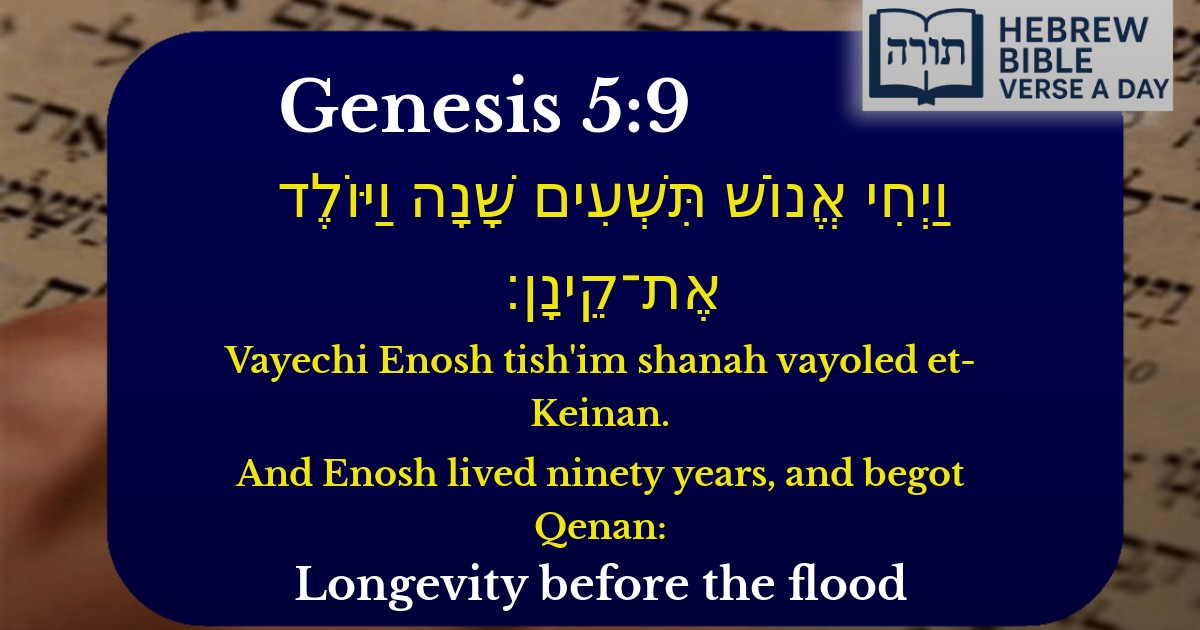Join Our Newsletter To Be Informed When New Videos Are Posted
Join the thousands of fellow Studends who rely on our videos to learn how to read the bible in Hebrew for free!
Hebrew Text
וַיְחִי אֱנוֹשׁ תִּשְׁעִים שָׁנָה וַיּוֹלֶד אֶת־קֵינָן׃
English Translation
And Enosh lived ninety years, and begot Qenan:
Transliteration
Vayechi Enosh tish'im shanah vayoled et-Keinan.
Hebrew Leining Text
וַיְחִ֥י אֱנ֖וֹשׁ תִּשְׁעִ֣ים שָׁנָ֑ה וַיּ֖וֹלֶד אֶת־קֵינָֽן׃
וַיְחִ֥י אֱנ֖וֹשׁ תִּשְׁעִ֣ים שָׁנָ֑ה וַיּ֖וֹלֶד אֶת־קֵינָֽן׃
🎵 Listen to leining
Parasha Commentary
📚 Talmud Citations
This verse is not quoted in the Talmud.


Introduction to Enosh and Qenan
The verse "וַיְחִי אֱנוֹשׁ תִּשְׁעִים שָׁנָה וַיּוֹלֶד אֶת־קֵינָן" (Bereishit 5:9) records the lifespan of Enosh, the grandson of Adam, and his begetting of Qenan. This verse is part of the genealogical list in Perek 5 of Sefer Bereishit, which traces the lineage from Adam to Noach.
Rashi's Commentary on the Verse
Rashi (Bereishit 5:9) notes that the name קֵינָן (Qenan) is related to the word קִנְיָן (acquisition or possession), suggesting that during his time, people began to acquire property and establish settlements. This reflects a shift in human civilization toward urbanization and material development.
The Significance of Enosh's Generation
The Midrash (Bereishit Rabbah 23:7) elaborates that the generation of Enosh was marked by the beginning of idolatry, as people started to worship false deities. Rambam (Hilchot Avodah Zarah 1:1) also references this period as the time when humanity strayed from the pure monotheism of Adam and Shet.
The Meaning of Qenan's Name
Ibn Ezra (Bereishit 5:9) suggests that Qenan's name may symbolize the human tendency toward materialism, as his generation began to focus more on worldly possessions. This aligns with Rashi's interpretation of קִנְיָן as acquisition.
Chronological and Genealogical Context
The Seder Olam Rabbah (Chapter 1) calculates the timeline from Adam to Noach, placing Enosh's birth in the year 235 from Creation. His begetting of Qenan at age 90 fits into the broader pattern of long lifespans in the pre-Flood generations.